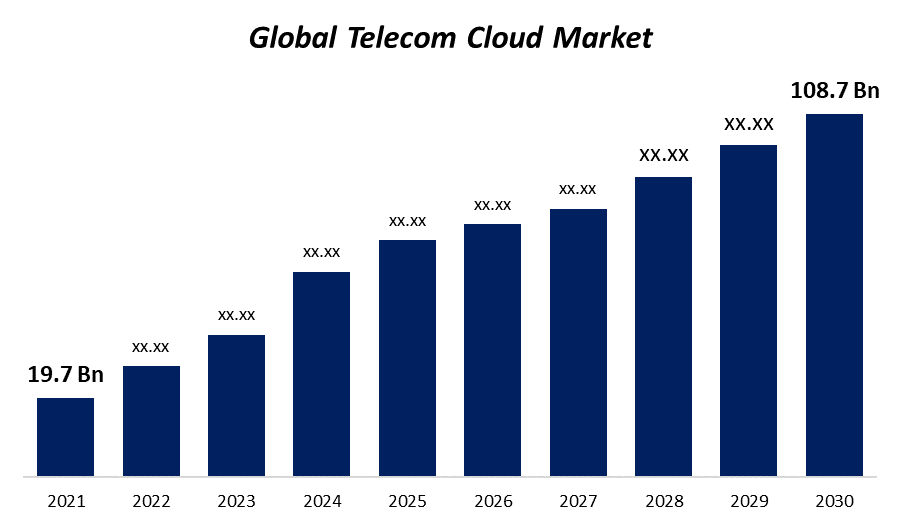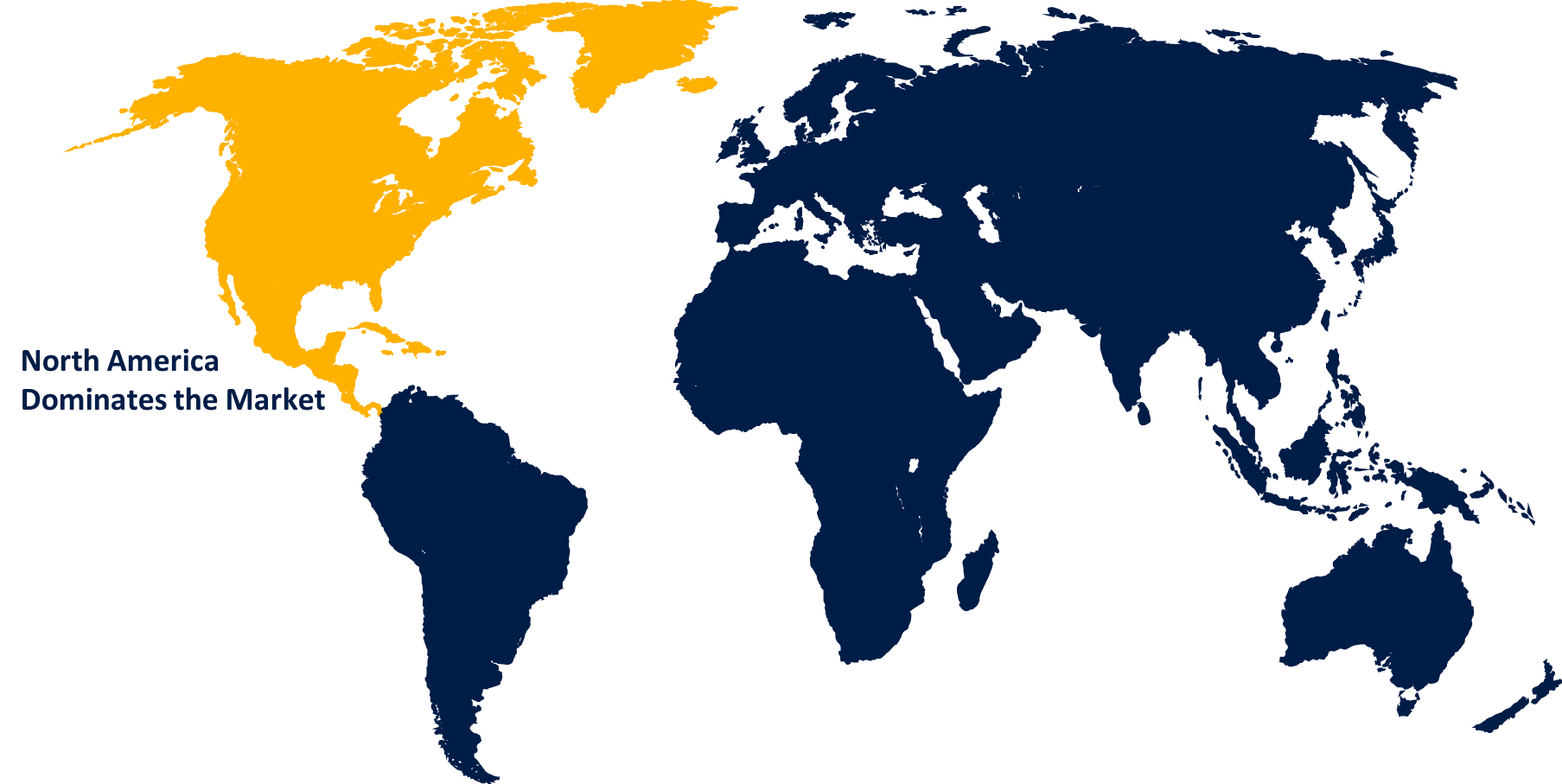Global Telecom Cloud Market Size to grow USD 108.7 Billion by 2030 | CAGR of 20.9%
Category: Information & TechnologyGlobal Telecom Cloud Market worth $108.7 billion by 2030
According to a research report published by Spherical Insights & Consulting, the Global Telecom Cloud Market Size to grow from USD 19.7 billion in 2021 to USD 108.7 billion by 2030 at a Compound Annual Growth Rate (CAGR) of 20.7% during the forecast period. This is because of factors such as a decrease in billing cost, increased mobile penetration, and a rise in the desire for bundled billing solutions. Customers who pay for their services in advance make up the largest portion of the market, and more than 80 percent of GSM subscribers worldwide use cloud billing systems.

Get more details on this report -
Browse key industry insights spread across 209 pages with 183 market data tables and figures & charts from the report ”Global Telecom Cloud Market Size, Share, and COVID-19 Impact Analysis, By Component (Solution and Services), By Deployment Type (Private, Public and Hybrid), By Service Model (Software as a Service (SaaS), Platform as a Service (PaaS) and Infrastructure as a Service (IaaS)), By Application Channel (Network, Data Storage, Computing, Traffic Management, Cloud Migration, and Others), By Enterprise(Large Enterprises and SMEs), and By Region (North America, Europe, Asia-Pacific, Latin America, Middle East, and Africa), Analysis and Forecast 2021 – 2030” in detail along with the table of contents. https://www.sphericalinsights.com/reports/telecom-cloud-market
View a detailed Table of Content here–
The COVID-19 pandemic has made an adverse impact on credit portfolios. There has been an unprecedented rise in unemployment and disruption in economic activity, putting a strain on the solvency of customers and companies. Central banks have taken a proactive approach by injecting liquidity into the market by lowering interest rates and asset purchase programs. Managing and monitoring credit, market, liquidity, and operational risk across financial markets were hard enough with ongoing geopolitical tensions, international trade wars, and the occasional hurricanes and earthquakes. The current pandemic has forced chief risk officers and their teams to recalibrate old assumptions and models used to manage and monitor risk. COVID-19’s global impact has shown that interconnectedness plays an important role in international cooperation. As a result, many governments started rushing toward identifying, evaluating, and procuring reliable solutions powered by AI.
The solution segment to account for the largest market size during the forecast period
Based on the component, the telecom cloud market is categorized into Solutions and Services. The solution segment accounts for the largest market size during the forecast period. Unified communication and collaboration, content delivery networks, network function virtualization, and other solutions are available in the solution section. The adoption of solutions is driven by the increasing use of the internet and mobile devices. As a result, businesses need to use new technologies more and more to increase organizational agility and operational effectiveness. Enterprises use a variety of applications, including phone, email, voice mail, IM (instant messaging) and presence, unified messaging, audio, web, and video conferencing, file sharing and whiteboarding, social networking, mobility, and others. The demand for content delivery network solutions is also fueled by the exponential growth in media content, the desire for rich video content among growing internet users, the trend toward digitalization among businesses across end-user sectors.
The private segment to hold a higher CAGR during the forecast period
Based on the deployment type, the telecom cloud market is categorized into Private, Public, and Hybrid. The private segment to hold higher CAGR during the forecast period. Private infrastructure is controlled solely by an organization, either on-site or off-site and is housed in the data Centre of the same business. Improved control, enhanced security and data privacy, specialized computational resources like RAN, VNF, and edge apps and services, and cost-efficiency in unused capacities in an already existing data Centre are all made possible by private infrastructure for telcos. Additionally, organizations can employ the unused capabilities through cloud interfaces, giving them access to the same tools and benefits of cloud management software, including automated management, a self-service interface, and the opportunity to sell idle capacities to associate businesses.
The Software as a Service (SaaS) segment to hold a higher CAGR during the forecast period
Based on the service model, the telecom cloud market is categorized into Software as a Service (SaaS), Platform as a Service (PaaS), and Infrastructure as a Service (IaaS). The Software as a Service (SaaS) segment is to hold a higher CAGR during the forecast period. A SaaS is a service that offers a commercial benefit, is obtained through a subscription model, and is developed using cloud-native software. For any carrier-grade network, it encompasses a completely automated service lifecycle and a fully digitalized business experience. By adopting SaaS technology, telecommunications companies may quickly develop agile application frameworks that maximize resource allocation and lower overall complexity. This increases organizational agility and enables telecom companies to accept a constant rate of change.

Get more details on this report -
North America is estimated to account for the highest market share in 2021.
The Global Telecom Cloud Market has been segmented into five major regions: Asia-Pacific, Europe, APAC, Latin America, and MEA. In North America, there has been a significant increase in the number of major businesses with technically trained people who provide ongoing innovative technology. The current surge in mobility and the growth of intelligent mobile devices may be traced to the consumerization of information technology, which is also responsible for the supremacy of this region. In addition, in response to the growing demand for browser-based communication solutions that are both user-friendly and cost-effective, several notable vendors are exploring the possibility of introducing vertical-specific WebRTC solutions and services in North America. This is expected to boost the growth of the market indirectly. Asia-Pacific to hold a higher CAGR during the forecast period.
Major vendors in the Global Telecom Cloud Market include AT&T Inc., BT Group PLC, Verizon Communications Inc., Telstra Corporation Ltd, Telefonaktiebolaget LM Ericsson, Deutsche Telekom, NTT Communications Corporation
Market Segments
This study forecasts global, regional, and country revenue from 2019 to 2030. Spherical Insights has segmented the global telecom cloud market based on the below-mentioned segments:
Global Telecom Cloud Market, By Component
- Solution
- Services
Global Telecom Cloud Market, By Deployment Type
- Private
- Public
- Hybrid
Global Telecom Cloud Market, By Service Model
- Software as a Service (SaaS)
- Platform as a Service (PaaS)
- Infrastructure as a Service (IaaS)
Global Telecom Cloud Market, By Application Channel
- Network, Data Storage, and Computing
- Traffic Management
- Cloud Migration
- Others
Global Telecom Cloud Market, By Enterprise
- Large Enterprises
- SMEs
Global Telecom Cloud Market, Regional Analysis
- North America
- US
- Canada
- Mexico
- Europe
- Germany
- Uk
- France
- Italy
- Spain
- Russia
- Rest of Europe
- Asia Pacific
- China
- Japan
- India
- South Korea
- Australia
- Rest of Asia Pacific
- South America
- Brazil
- Argentina
- Rest of South America
- Middle East & Africa
- UAE
- Saudi Arabia
- Qatar
- South Africa
- Rest of Middle East & Africa
Related Report:
Cognitive Computing Market Size, Forecast 2030
https://www.sphericalinsights.com/reports/cognitive-computing-market
Virtual Cards Market Size, Forecast 2030
https://www.sphericalinsights.com/reports/virtual-cards-market
Contact Us: https://www.sphericalinsights.com/contact-us
Need help to buy this report?